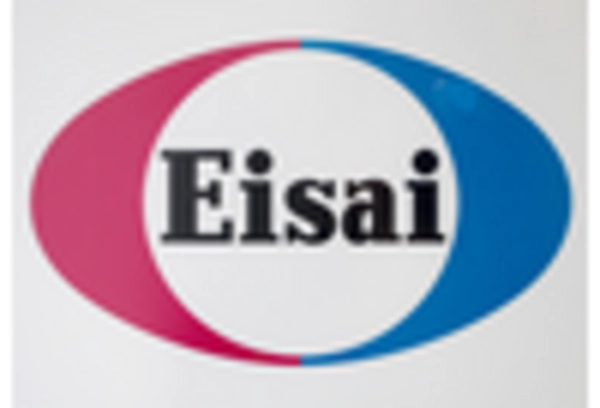Increased Awareness and Advocacy
The growing awareness and advocacy for mitochondrial diseases in Italy are pivotal for the mitochondrial myopathy-diagnosis-treatment market. Patient advocacy groups and healthcare organizations are actively promoting education about these disorders, which is likely to lead to earlier diagnosis and treatment. This heightened awareness can result in increased patient engagement and demand for specialized care, thereby driving market growth. Furthermore, initiatives aimed at educating healthcare professionals about mitochondrial myopathy are becoming more prevalent, potentially improving diagnostic rates. As more individuals become informed about the symptoms and implications of these conditions, the mitochondrial myopathy-diagnosis-treatment market may see a surge in demand for both diagnostic services and therapeutic interventions.
Regulatory Framework Enhancements
Enhancements in the regulatory framework surrounding rare diseases in Italy are influencing the mitochondrial myopathy-diagnosis-treatment market. The Italian Medicines Agency (AIFA) has been working to streamline the approval process for treatments targeting rare conditions, which may facilitate quicker access to innovative therapies for patients. This regulatory support is crucial for pharmaceutical companies looking to develop and market new treatments for mitochondrial myopathy. Additionally, the establishment of incentives for research and development in this area could encourage more companies to invest in the mitochondrial myopathy-diagnosis-treatment market. As regulatory pathways become more favorable, the potential for new therapies to enter the market increases, thereby benefiting patients and healthcare providers alike.
Growing Investment in Rare Disease Research
The rising investment in research focused on rare diseases is a significant driver for the mitochondrial myopathy-diagnosis-treatment market. In Italy, both public and private sectors are increasingly funding research initiatives aimed at understanding mitochondrial disorders. This trend is likely to lead to the development of novel therapies and improved diagnostic methods. For instance, the Italian government has allocated substantial resources to support research in rare diseases, which may enhance the overall landscape for mitochondrial myopathy treatments. Additionally, collaborations between academic institutions and pharmaceutical companies are becoming more common, fostering innovation in this field. As a result, the mitochondrial myopathy-diagnosis-treatment market is expected to experience growth driven by the influx of research funding and the subsequent advancements in treatment options.
Rising Prevalence of Mitochondrial Disorders
The increasing incidence of mitochondrial disorders in Italy is a crucial driver for the mitochondrial myopathy-diagnosis-treatment market. Recent estimates suggest that mitochondrial diseases affect approximately 1 in 5,000 individuals, leading to a growing patient population requiring diagnosis and treatment. This rise in prevalence necessitates enhanced diagnostic tools and therapeutic options, thereby stimulating market growth. As awareness of these disorders expands among healthcare professionals and the public, the demand for specialized care and innovative treatment solutions is likely to increase. Furthermore, the Italian healthcare system is adapting to these needs, potentially allocating more resources towards research and development in this area. Consequently, the mitochondrial myopathy-diagnosis-treatment market is poised for significant expansion as healthcare providers seek to address the challenges posed by these complex conditions.
Technological Innovations in Diagnostic Tools
Technological advancements in diagnostic tools are transforming the mitochondrial myopathy-diagnosis-treatment market. Innovations such as next-generation sequencing (NGS) and advanced imaging techniques are enhancing the accuracy and speed of diagnosis. In Italy, the integration of these technologies into clinical practice is becoming more prevalent, allowing for earlier detection of mitochondrial myopathy. This shift not only improves patient outcomes but also drives market growth as healthcare facilities invest in state-of-the-art diagnostic equipment. The Italian government has recognized the importance of these advancements, potentially providing funding and support for research initiatives aimed at developing new diagnostic methods. As a result, the mitochondrial myopathy-diagnosis-treatment market is likely to benefit from increased investment in technology, leading to improved diagnostic capabilities and treatment options for patients.

















Leave a Comment